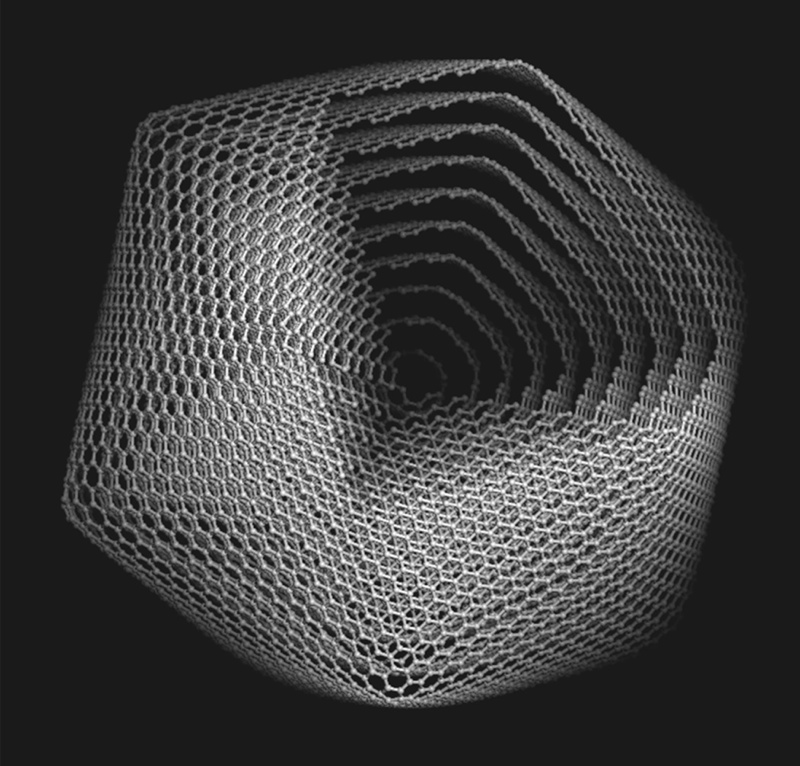New Synthetic Diamonds Are Hardest Gems Ever Created

Diamonds are the hardest naturally occurring minerals known to man. Even so, scientists are working to make them even tougher, in order to use the sparkling gems as tools for cutting.
Now, a team of researchers, led by Yongjun Tian and Quan Huang at Yanshan University in China, has created synthetic diamonds that are harder, meaning they are less prone to deformation and breaking, than both natural and other man-made diamonds.
To create these tougher-than-steel diamonds, the researchers used tiny particles of carbon, layered like onions, and subjected them to high temperatures and pressures. The resulting diamonds had a unique structure that makes them more resistant to pressure and allows them to tolerate more heat before they oxidize and turn to either gas (carbon dioxide and monoxide) or ordinary carbon, losing many of their unique diamond properties. [In Photos: 13 Mysterious & Cursed Gemstones]
First, a bit about diamonds: Gem-quality diamonds are single crystals, and they are quite hard. But artificial diamonds used on tools are harder still. That's because they are polycrystalline diamonds, or aggregates of diamond grains called domains, that measure a few micrometers or nanometers across. The grains help to prevent the diamond from breaking, as the boundaries act like small walls that keep chunks of diamond in place. The smaller the domains are, the stronger the diamond.
Tian's team used the onionlike carbon nanoparticles to make diamonds with domains that are a few nanometers in size and are mirror images of each other. Such "nanotwinned" crystals are much harder than ordinary diamonds, by a factor of two.
The team tested the artificial diamond's hardness by pressing a pyramid-shaped piece of diamond into the nanotwinned diamond. Tian's group made a small indentation in their artificial diamond, applying pressures equivalent to nearly 200 gigapascals (GPa) — about 1.9 million atmospheres. An ordinary natural diamond would crush under just half that pressure.
The team also tested how hot the nanotwinned diamond could get before oxidizing. In two different tests, they found that the ordinary diamond began to oxidize at about 1,418 and 1,481 degrees Fahrenheit (770 and 805 degrees Celsius), depending on the testing method. The nanotwinned diamonds didn't oxidize until they reached 1,796 or 1,932 F (980 or 1,056C).
Get the world’s most fascinating discoveries delivered straight to your inbox.
But not everyone is convinced by these results. Natalia Dubrovinskaia, a professor of material physics at the University of Bayreuth in Germany, said she doesn't trust the pressure tests. If what Tian's group is reporting is true, the indenter should have broken, because the material of the indenting tool is not as hard as the nanotwinned diamond, she told Live Science in an email.
Tian disagreed with Dubrovinskaia's assessment of the indenter. He said that it is possible to measure pressure on the nanotwinned diamond because the indenter was pushed from a vertical position and the amount of shearing force on it wasn't enough to damage it.
Tian and Dubrovinskaia have "sparred" before; last year, the Yanshan lab said it demonstrated a similar phenomenon, making a form of ultrahard cubic boron nitride. At the time, Dubrovinskaia voiced similar concerns.
Tian, meanwhile, stands by his work. "Indentation hardness of any material can be measured reliably using [a] diamond indenter when the indenter axis is exactly perpendicular to the smooth surface of [the] tested sample," he said.
Another scientist, Ho-Kwang Mao, of Argonne National Laboratory in Illinois, thinks Tian's work is valid; he noted that an indenter could reliably measure the hardness of materials much harder than itself.
In addition, the novel part of the work is that such a hard material has been created in a way that can be readily reproduced. "They created a bulk material," Mao said. "They succeeded in making this and making it harder than diamond — that's novel."
The new study is detailed in the June 12 issue of the journal Nature.
Follow us @livescience, Facebook & Google+. Original article on Live Science.



